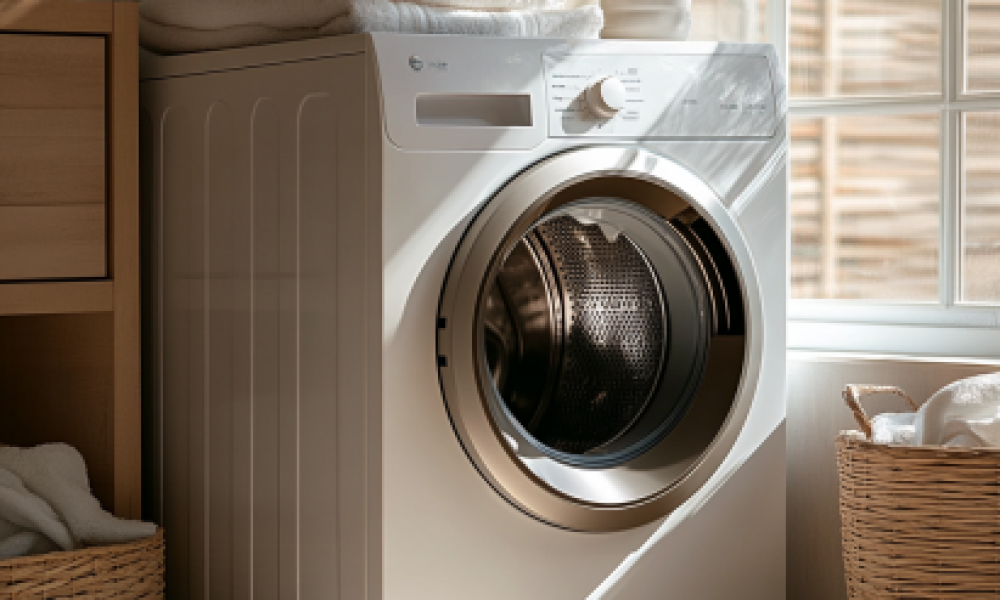Can Bedding Be Washed at 30 or 60 Degrees?
Wondering if you should wash your bedding at 30 or 60 degrees? Here’s what you need to know to keep your sheets clean and cozy.
Key Takeaways: Can Bedding Be Washed at 30 or 60 Degrees
- Washing at 60°C is effective for killing dust mites and bacteria.
- 30°C washes are energy-efficient and suitable for lightly soiled bedding.
- Always check care labels and use appropriate detergents for best results.
- Can bedding be washed at 30 or 60 degrees? Yes—both are safe with proper care.
Why Washing Temperature Matters
Your bedding isn’t just a soft landing after a long day—it collects sweat, skin flakes, body oils, allergens, and microscopic dust mites. For better bedding choices that support sleep quality, explore our guide to investing in quality bedding.
According to the NHS, a wash temperature of 60°C is effective at killing most bacteria and dust mites, making it ideal for allergy sufferers or after illness. In contrast, a 30°C wash is gentler and conserves energy—perfect for lightly soiled linens or delicate fabrics.
If you’re aiming for sustainability without compromising hygiene, pair lower temperatures with enzyme-based detergents. These formulas are designed to clean effectively in cooler water, helping you save energy without losing freshness.
Want to learn more about how your environment impacts sleep? See our feng shui bedroom guide.
Summary: The right wash temperature keeps bedding fresh and safe. Use 60°C for deep cleaning and 30°C for energy-efficient maintenance with the right detergent.

Check the Care Label
Always refer to the care label on your bedding before washing. It provides essential information on maximum temperatures, suitable washing cycles, and drying methods. These labels ensure you don’t accidentally shrink or damage your bedding.
For example, cotton and polycotton blends are generally safe at 60°C and benefit from higher temps for better hygiene. Delicate fabrics like silk, satin, or linen often require lower temperatures—typically around 30°C or 40°C—to avoid weakening fibers or fading dyes.
A quick look at the label can save you from costly laundry mistakes and help maintain the texture, color, and longevity of your linens.
Summary: The care label is your best friend. Always follow its instructions to preserve the quality and cleanliness of your bedding.

Choose the Right Detergent
One question we often hear is, can bedding be washed at 30 or 60 degrees and still be safe? The answer depends on detergent choice. Enzyme-based or “bio” detergents are ideal for 30°C washes, as they contain biological enzymes that break down stains effectively—even in cooler water.
For 60°C washes, standard detergents generally do the job, especially for white or colorfast fabrics. However, if you’re dealing with sensitive skin or allergies, opt for fragrance-free or hypoallergenic formulas.
Eco-conscious? There are plant-based, biodegradable detergents available that clean effectively while being gentle on both your linens and the environment. See our guide to bed positioning and sleep quality.
Summary: Use enzyme-based detergents for 30°C washes and standard formulas for 60°C. Pick hypoallergenic or eco-friendly options if you have sensitivities.

Is 30°C Hygienic Enough?
This is a common question—and the answer depends on how the bedding is used. For lightly soiled bedding washed weekly, 30°C with the right detergent can be hygienic enough. Today’s detergents are designed to work effectively even in cold or warm water.
However, if someone in your household has been ill, or if your bedding has been through a sweaty night, a hotter wash at 60°C is a safer bet for eliminating germs and dust mites. It’s also the better option for allergy sufferers or pet owners.
According to the Energy Saving Trust, many modern washing machines and detergents are optimized for lower temperatures, but 60°C remains the gold standard for hygiene-critical loads. For a holistic approach to rest, see our feng shui tips for better sleep.
Summary: 30°C is fine for regular washing with good detergent. Go for 60°C after illness or for allergy-sensitive bedding.
Eco-Friendly vs Conventional Bedding Care
Eco-conscious households often wonder: can bedding be washed at 30 or 60 degrees while staying sustainable? The answer is yes, with the right habits. Conventional washing at 60°C uses more energy, but guarantees a hygienic clean. In contrast, washing at 30°C reduces your carbon footprint and saves on utility bills, especially when paired with eco-friendly detergents.
Sustainable bedding materials such as organic cotton, bamboo, and hemp are more delicate and often fare better at lower temperatures. Conventional polyester blends can withstand higher heat but may contribute to microplastic shedding during washes. Choosing sustainable bedding and washing at 30°C balances hygiene with environmental responsibility.
For eco-conscious sleepers, certifications like GOTS (Global Organic Textile Standard), OEKO-TEX, and Fairtrade ensure your bedding is responsibly made. These certifications check for harmful chemicals, ethical sourcing, and safe labor practices. Pairing certified bedding with mindful laundry choices maximizes their lifespan and lowers environmental impact.
Summary: Sustainable bedding materials benefit from cooler washes. Use 30°C with eco detergents for sustainability, and 60°C for deep cleaning when required.

Final Thoughts
Ultimately, can bedding be washed at 30 or 60 degrees? Yes—with thoughtful choices about detergent, cycle settings, and pre-treatment, both temperatures can keep your bedding fresh and clean. If energy-saving and fabric care are priorities, 30°C with a powerful detergent works well. But when hygiene is paramount, such as after illness or during allergy season, 60°C offers peace of mind.
By following these expert tips—from checking care labels to adding an extra rinse—you’ll enjoy fresher, softer, and longer-lasting bedding. Sweet dreams start with smart laundry choices. For more insights, see our article on bedroom layouts that enhance sleep quality.
FAQ
- Can I wash all types of bedding at 60°C?
- Not all fabrics can withstand high temperatures. Always check the care label to prevent damage.
- Is washing at 30°C sufficient to kill dust mites?
- Washing at 30°C may not eliminate dust mites completely. For allergy sufferers, 60°C washes are recommended.
- How often should I wash my bedding?
- It’s advisable to wash your bedding weekly to maintain cleanliness and reduce allergens.























